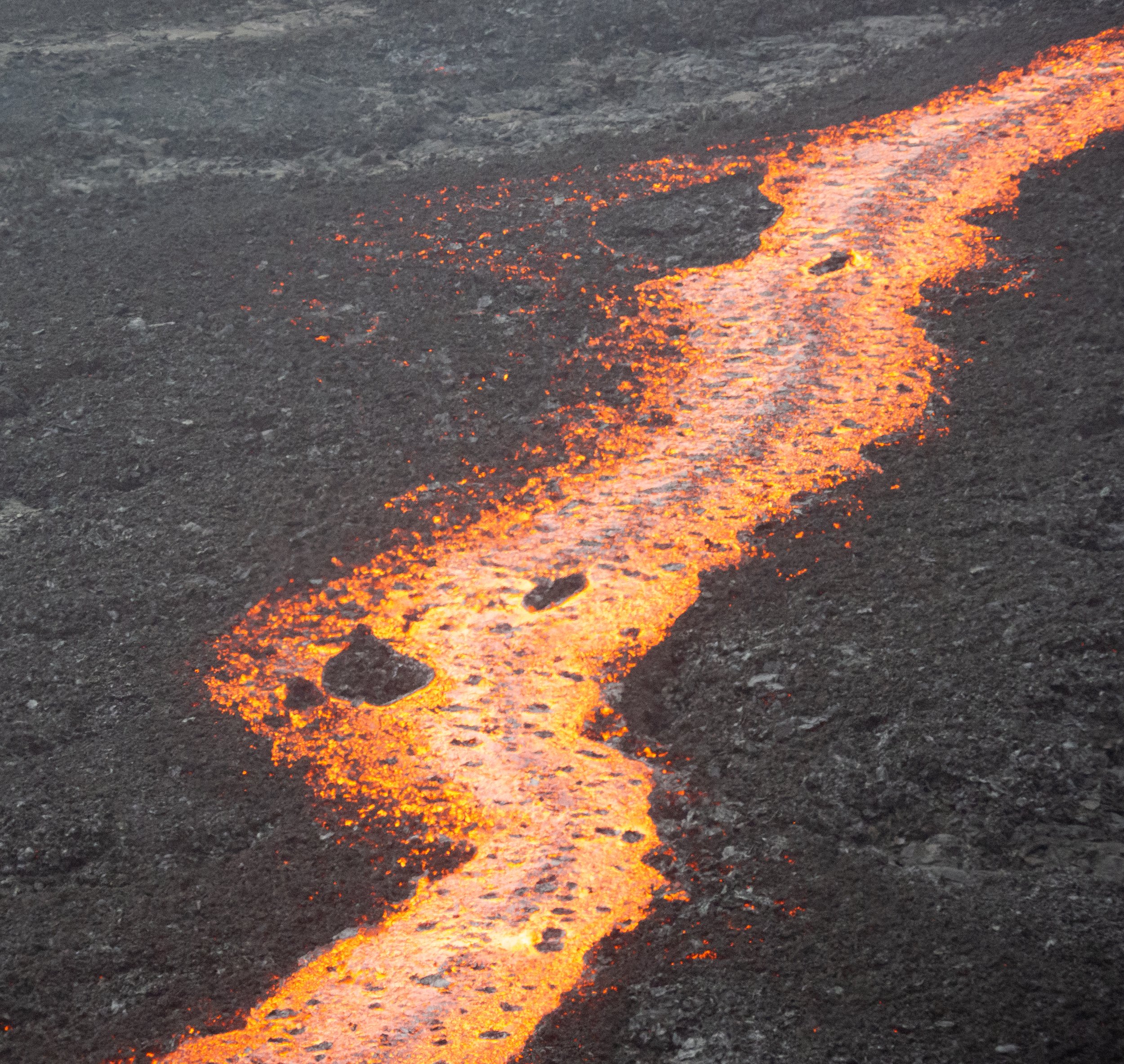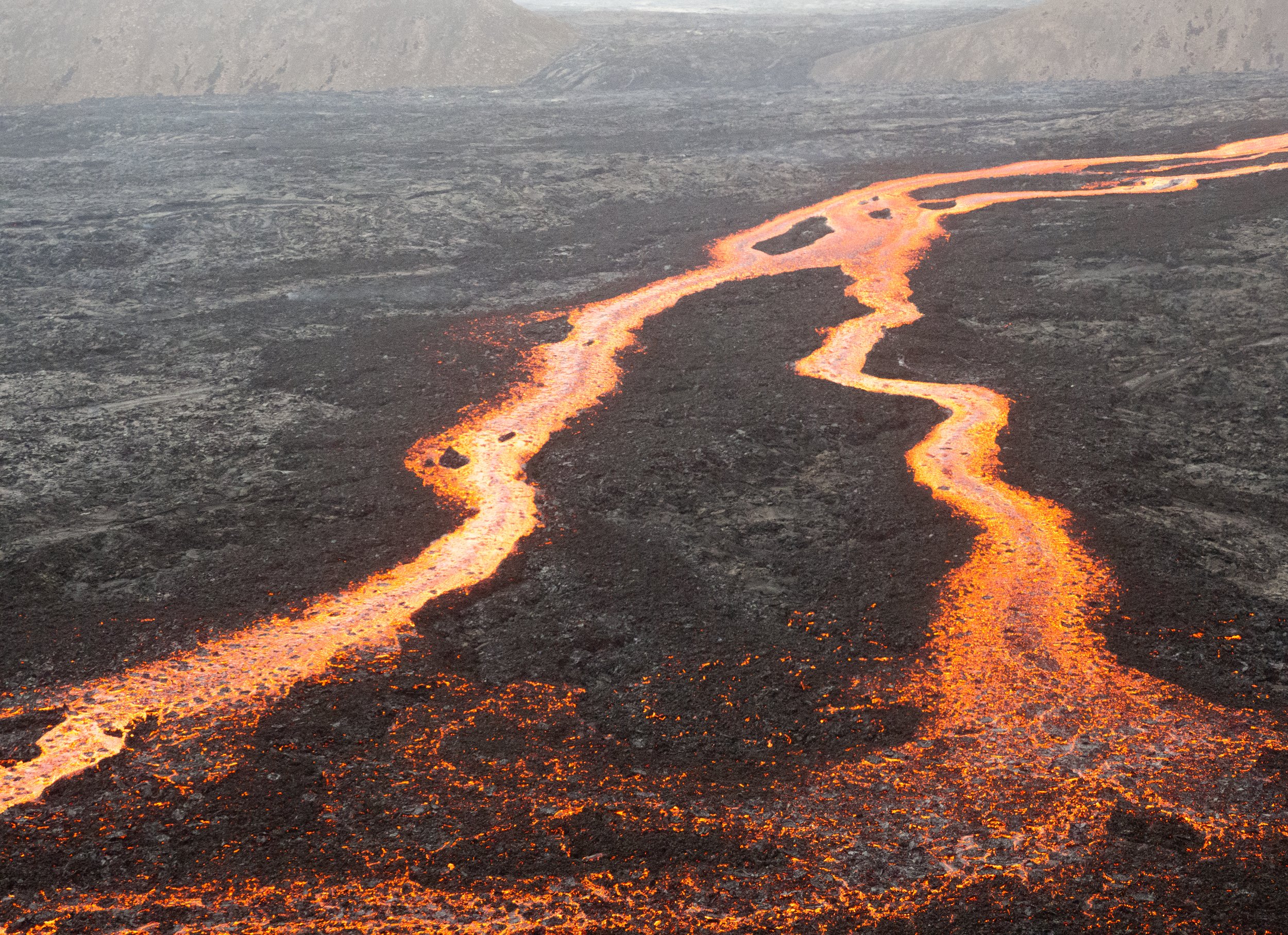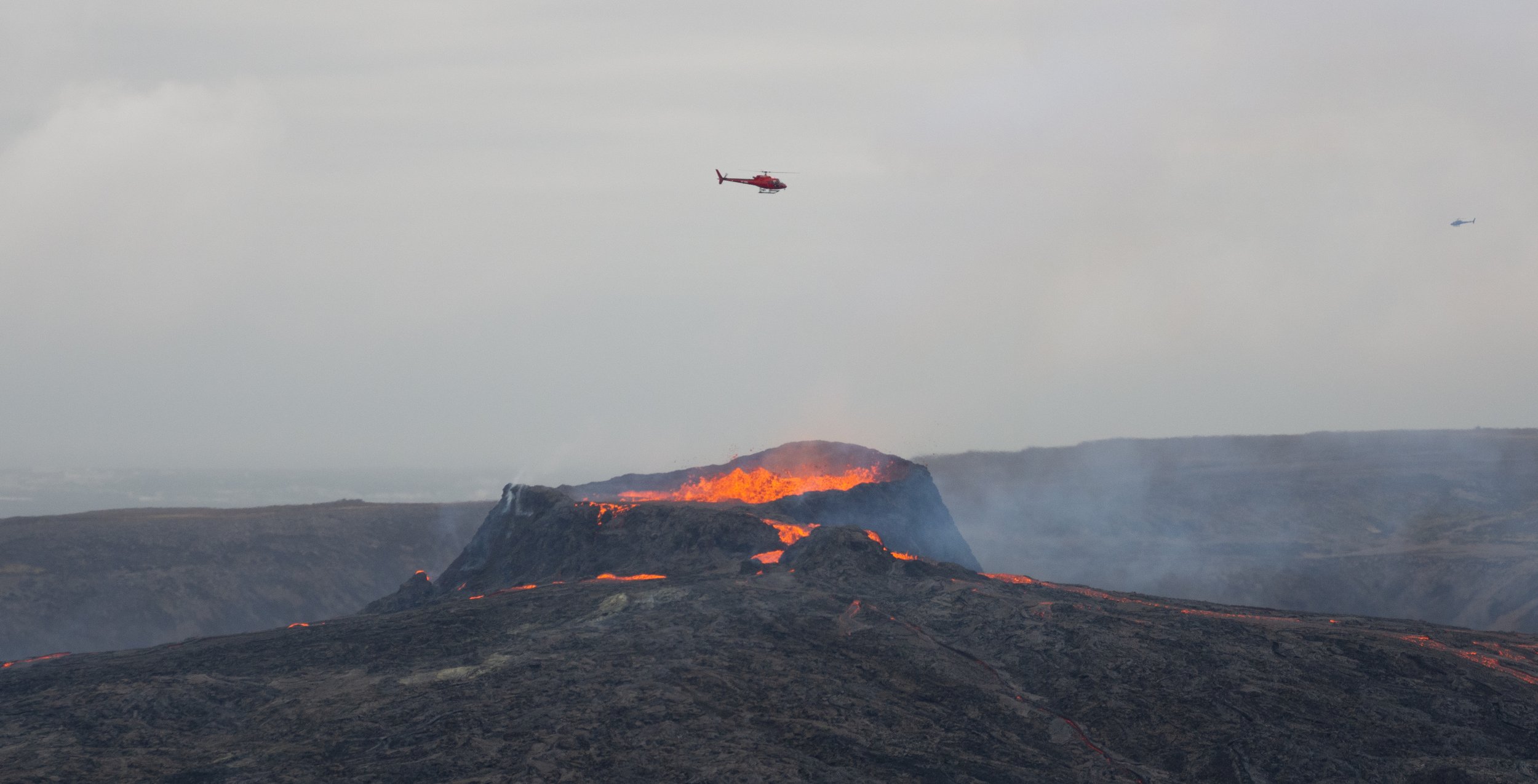The view from Hades’ doorstep is quite captivating.
I can now claim to have warmed my hands to the heat irradiated by a wave of molten rock, a stream of burning red fluid pulsating out of a monumental gash in our planet’s crust.
And that the view of Hades’ ante-chamber is hypnotic to say the least.
The Reykjanes peninsula, that wind-torn parcel of land that holds both Iceland’s main airport and the capital Reykjavík, is riddled with the remnants of countless eruptions. The airport highway crosses the tormented landscape of an ancient lava field, and if you throw a rock chances are that it’ll land on a dormant volcano. Still, according to people who know their stuff, there hadn’t been an eruption, in Reykjanes, for more than 800 years. Come 2021, though, that was about to change.
Fagradalsfjall is what people in the lava business call a “tuya volcano”. Imagine a sort of tall stack of pancakes, vertical walls and a mesa-like top: the kind of structure that emerges when an eruption starts underneath a glacier. Fagradalsfjall has laid asleep ever since mammoths roamed the Earth and Neanderthals followed them; but a neighbouring pasture, called Geldingadalir, was about to shake things up. In March 2021, after a swarm of earthquakes, a fissure opened in the ground, gushing red lava like a wound. Then another. Then another. Then another. At the time of writing, six sets of vents had opened in what volcanologists decided to call the “Fagradalsfjall eruption”.
The world’s media descended on the scene like flies on fresh manure, rubbing hands with barely-concealed glee. An eruption during a pandemic after a chaotic US election and attempted coup? It must’ve felt like triple Christmas for a circus increasingly hooked on the scabrous, the lurid and the desperate. Could hot lava submerge Reykjavík?Would it stop all North Atlantic flights?
Fagradalsfjall couldn’t, and didn’t. It continued spewing out prodigious amount of lava and gases, filling barren and unpopulated valleys with 160 million cubic metres of black lava, regardless of whatever the media thought and said. And it didn’t mind one bit when said news broadcasters, once it became clear that neither Tommy Lee Jones nor Bruce Willis would be needed, wandered off to gawk at the next crisis. Only Icelanders and those with nothing better to do remained.
Some 20 minutes east of Grindavík, past the saltfish museum and the football stadium, route 427 climbs through a panorama of dark hills, rising and sinking in synchronicity with the landscape. A right-hand turn reveals a gravel car park where vehicles of all kinds, from microcars to gargantuan overland rigs, are arranged in something resembling - from a distance and one eye closed - lines. A trail departs from the jumble of glass and metal.
If there’s a worthier recipient for the adjective “windswept” than the path uncoiling out of the carpark and into the bleak hillscape behind, I don’t want to see it. I’ve pounded that dirt a fair few times and there hasn’t been an occasion where I haven’t been tossed sideways, buffeted or ruffled by Aeolus’ gusts.
There’s always quite a crowd, at least for Icelandic standards, scattered along the trail. Multi-generational families and solo travellers, grizzled trekkers and Instagram queens in yoga tights, Icelanders in shorts and Spaniards bundled in down jackets: we’re all united in this laic pilgrimage to the sanctuary of mother nature.
The trail climbs above a sequence of hills, always chasing the crest. Few and far between are the dips into lower grounds and always as brief as possible. Sensible policy given that, here, the floor really is lava.
A large valley appears, filled with a dark lake of tortured, black rock. A sea of onyx waves frozen in motion, my first encounter with Fagradalsfjall’s output. The vents themselves are still unseen, hidden behind a steep slope streaked by the ebony cascade of rocks that have filled the valley.
It all appears quiet, dormant, howling winds the only noise, but it’s only an impression. Smoke plumes piston out of the expanse, revealing a molten core still lurking underneath the surface. A rivulet of red lava pokes through a gap in the alien landscape.
Lava tubes. Levigated conduits for a stream of molten rock, some of which can reach colossal dimensions, must be running through the field. They exist on other planets too, wherever there is vulcanism, and some have advanced the option of using those on Mars to carve out human habitats on to the Red Planet. Clearly, though, those tourists who I spot climbing on the lava field haven’t heard of them. And neither have read the Morgunblaðið article “Visitors Seem to Have a Hard Time Staying off the Lava”.
Not wishing to add my name to the crowd of Darwin Award recipients, I press on. Strands of clouds hurry across the landscape, bringing visibility to nil in a matter of seconds. More often than not, the fog is followed by the hiker’s worst foe: sheets of cold, horizontal rain.
Then, suddenly, the view opens up like a theatre curtain, revealing a lunar landscape painted charcoal grey. And, behind it, the entryway to Earth’s molten heart.
I’m thrown back to the drawings I used to do with crayons in kindergarten: a triangular mountain topped by a cauldron of bubbling red lava. The only two divergences from my youthful experiments in volcanological art are the absence of a dinosaur caught in contemplation of the eruption and the fact that, from my vantage point, I am above the volcano.
It’s warm up here. My back is soaked in sweat and lashed by the wind but the parts of my anatomy that are facing the eruption bask in heat, a balmy warmth irradiated by the marching river of lava that is flowing a few hundred meters below where I stand. The few hikers that have made it this far are all holding hands and feet forwards, enjoying the world’s largest fireplace. A purring cat or two wouldn’t go amiss.
Human constructs like distance, speed and volume lose meaning before such a spectacle. Long tongues of liquid fire traverse a black desert. Fountains of orange-crimson lava gurgle and spray from an anthracite mountain.
I’m drawn, moth-like, to the hypnotic advance of the lava towards the hill I’m standing on. Like a deer on the motorway I stand still and gawk at the bright headlights of this twin column of molten fire. It’s rock, it’s incandescent, and yet it behaves like a liquid, flowing downhill in obeyance of the laws of physics and in search of the patch of least resistance.
Fragments on the surface of the lava cool down, turning black like necrotic tissue. They surf above the molten belt conveyor to the front of the advance, where they fall with a delicate noise like the tinkling of glass. Then, more molten rock smothers them.
It’s moving, it’s advancing. It might not be the deepest of observations, but right here and now it’s the best I can come up with. Lava flows around obstacles, it ripples and waves around boulders, mimicking the features of the ground underneath to the extent allowed by its own viscosity. It’s almost as if it were alive.
A new day comes and I climb even further, to the top of the last hill. The rain has given us a break and, though still windy, clouds are now a uniform carpet sitting above us, rather than running between our legs. Around me, Reykjanes looks its normal self: a green-brown tri-dimensional canvas pockmarked by ancient craters and steep hills. An enormous black gash crosses the panorama from North to South, rushing downhill towards the sea; at its centre, the red oculus of the caldera.
Staring in the mouth of a volcano. I never thought I’d be using this phrase as a descriptor of an action and not as a slightly hyperbolic figure of speech. And yet here we are.
The caldera is filled to the brim with boiling rock. Agitated by forces I can’t comprehend, obeying impulses I cannot see, lava gurgles, sloshes and explodes in fountains tens of metres high. Dull roars travel to us through the air, accompanied by a whiff of rotten eggs, gunpowder and ash. Hell’s Arbre Magique, I guess. Helicopters buzz overhead and an airplane flies by, minuscule ambassadors of humankind’s technology.
The volcano ignores them. That is, if anything, my takeaway message. I reached no epiphany on the slopes of Fagradalsfjall. I got no inspiration for an addendum to the Book of Revelation. Just an inextinguishable fascination for a natural world that is neither benign nor malevolent, merely indifferent to us all and to our attempts to explaining or understanding it. A nature that carries on regardless of whether we are there or not.
I leave Iceland the day after my last visit to the volcano. As I drive north from Grindavík, in the dark drizzle that precedes dawn, my eye is caught by a red flash in the rear-view mirrors. Something to the east is painting the clouds crimson. Cheap Communist tropes flash through my mind before I realise it’s the volcano. Still there, still doing its thing.
For as long as it’ll want.











